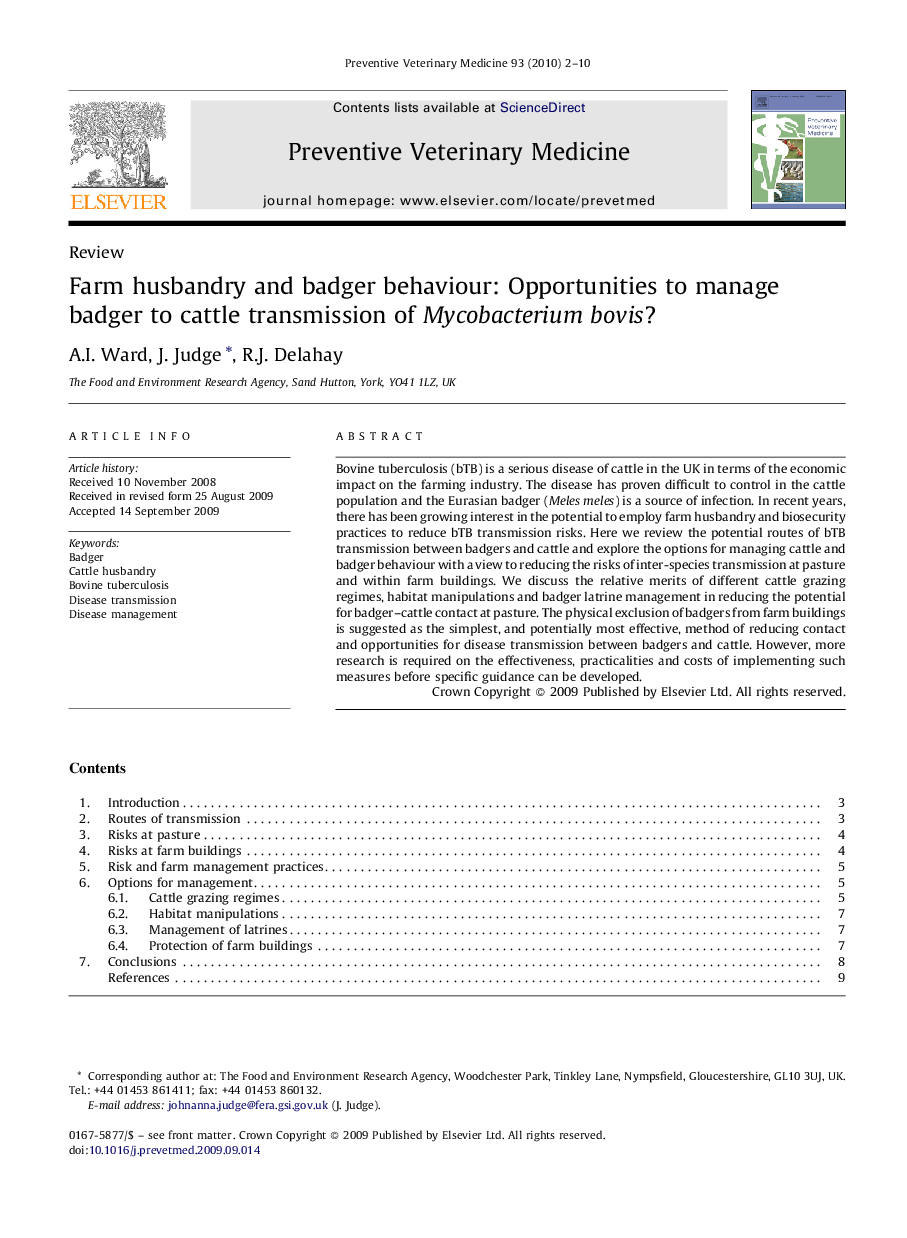| Article ID | Journal | Published Year | Pages | File Type |
|---|---|---|---|---|
| 2453060 | Preventive Veterinary Medicine | 2010 | 9 Pages |
Bovine tuberculosis (bTB) is a serious disease of cattle in the UK in terms of the economic impact on the farming industry. The disease has proven difficult to control in the cattle population and the Eurasian badger (Meles meles) is a source of infection. In recent years, there has been growing interest in the potential to employ farm husbandry and biosecurity practices to reduce bTB transmission risks. Here we review the potential routes of bTB transmission between badgers and cattle and explore the options for managing cattle and badger behaviour with a view to reducing the risks of inter-species transmission at pasture and within farm buildings. We discuss the relative merits of different cattle grazing regimes, habitat manipulations and badger latrine management in reducing the potential for badger–cattle contact at pasture. The physical exclusion of badgers from farm buildings is suggested as the simplest, and potentially most effective, method of reducing contact and opportunities for disease transmission between badgers and cattle. However, more research is required on the effectiveness, practicalities and costs of implementing such measures before specific guidance can be developed.
